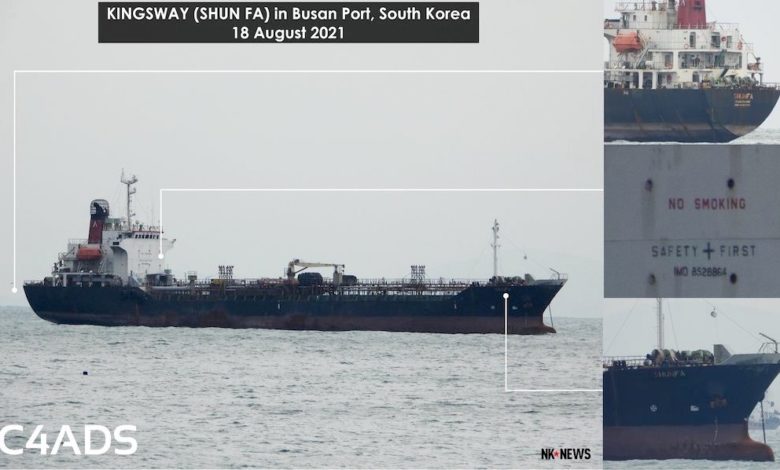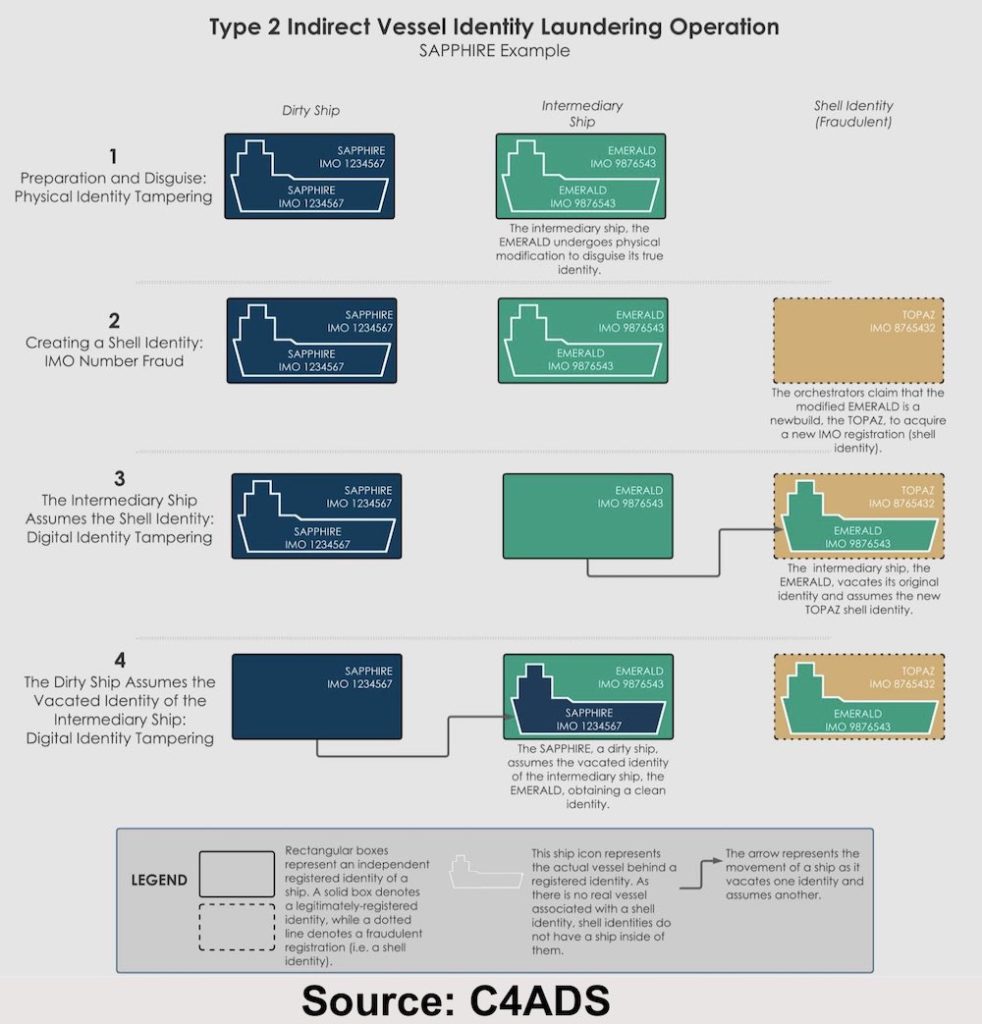New report highlights the rise of vessel identity laundering

The International Maritime Organization (IMO) is investigating claims that North Korea has been carrying out a sophisticated process of vessel identity laundering. The novel tactic is detailed in a 56-page report from C4ADS, a Washington DC-based nonprofit organisation dedicated to data-driven analysis and evidence-based reporting of conflict and security issues worldwide.
What C4ADS has unearthed is a process in which one or more vessels adopt a different identity on automatic identification system (AIS) transmissions in order to allow sanctions-hit ships to assume clean identities, and involves at least one vessel in this operation assuming an identity that is obtained by defrauding the IMO.
Vessel identity laundering is significantly more sophisticated than previously observed instances of vessel identity tampering, in which vessels modify their physical appearance or broadcast false data on AIS transmissions.
“Given its complexity, vessel identity laundering presents unprecedented challenges for maritime regulators and risks undermining global shipping practices,” the C4ADS report states.
In recent years, C4ADS has observed at least 11 ships engaging in elaborate schemes to create fraudulent ship registrations with the IMO, which are subsequently used to launder the identity of vessels that have been associated with illicit activities.
“Vessel identity laundering operations present a new and unexpected challenge; they strike at the IMO’s cataloguing and management of the global fleet, a system that all maritime stakeholders are dependent on for accurate record-keeping and identification of ships worldwide,” the report warns, going on to show detailed examples of how North Koreans hijacked the IMO registration process to issue a registered identity and IMO number to non-existent vessels, which in turn can be used to disguise the identity of other IMO-registered ships. In one recent case, the North Koreans were able to fob off authorities claiming a 30-year-old ship was in fact a newbuild.
The two processes uncovered by C4ADS are outlined in diagrams below.
C4ADS has urged the IMO and shipping registers to implement stricter regulatory standards and due diligence checks in the registration and operation of the global shipping fleet, suggesting the UN body should require resubmission of vessel photographs and current details from operators at regular intervals for ships to maintain their registration, and deregister non-compliant vessels.
The IMO has also been urged to publish a list of vessels that are purged from the global fleet, to ensure that it is broadly known that those vessels are no longer IMO-registered, and illicit actors cannot exploit their identities.
Likewise, a list of IMO numbers that are cancelled and vessels whose registrations are rescinded ought to be made public, the authors of the report suggest.
Given how AIS tampering is an increasingly widespread tactic used to obfuscate the activity and identity of ships that participate in illicit activities, the report also recommends that the IMO’s Maritime Safety Committee should coordinate a working group to develop hardware and software security standards for preventing the tampering of AIS transponders.
The IMO has said that it is reviewing its ship registration process.



This article is very interesting !
Especially in case of old General Cargo Vessels you can observe a descending flag history since they have been sold by their original owners (Dutch, Germany, etc.).
An example is the small General Cargo LADY DIDEM (IMO 8516598) which was registered under the fraudulent flag of Congo (DR Republic / home port: Matadi) in 2016.
I photographed the vessel at Istanbul 5/7/2016 and reported the change of registry to the EU Equasis Database accordingly.
They denied the request of correction and told me that the flag of Congo (DR Republic) is not a valid flag / a flag of fraudulent use.
However, EU Equasis Database listed this flag later at their database.
World Ship Society Magazine MARINE NEWS (July, 2017) published a report about fraudulent flags as follows:
“I was recently advised that Congo DR flag is only for domestic vessels. Congo DR
International register is one of several fraudulent ‘international registers’ (Micronesia
international and Fiji international are others) which have appeared, and attracted quite a few
vessels. Most have since been reflagged to genuine registers.”
…. and cited the story of LADY DIDEM.
LADY DIDEM was reflagged to Panama in 2017 and sank during cargo operation at Castellon Port, Spain, 28/5/2021
https://cargo-vessels-international.blogspot.com/2017/04/lady-didem-imo-8516598-1986-1416-gt.html
This type of device manipulation is reaching new heights across multiple industries including Wireless Technology. The obfuscation of International Mobile Equipment Identifiers or IMEI’s used to register devices alongside SIM cards or IMSI’s to provision Wireless Service or bypass theft controls is another example.
The same developing countries that are allowing the falsification of records for registration of ships is also failing to acknowledge device registries that the wirelessindustries have in place to prevent theft and fraud. These countries have become trafficking centers for this type of losses and are responding to embargoes by creating these bypasses or workarounds to continue the trafficking.
Stronger sanctions only create additional fraud as opposed to driving compliance and in esence , this type of manipulation just further dilutes the effectiveness.
Placing rquirements to ” harden” AIS credentials will only drive further nefarious behavior. In order for it to be truly effective, stronger inspections and evaluations by independent observers needs to occur and impoundment followed by destruction must occur. Simple Fines and release of merchandise only furthers the behavior.